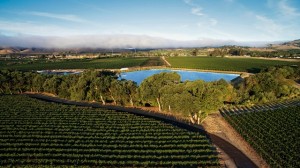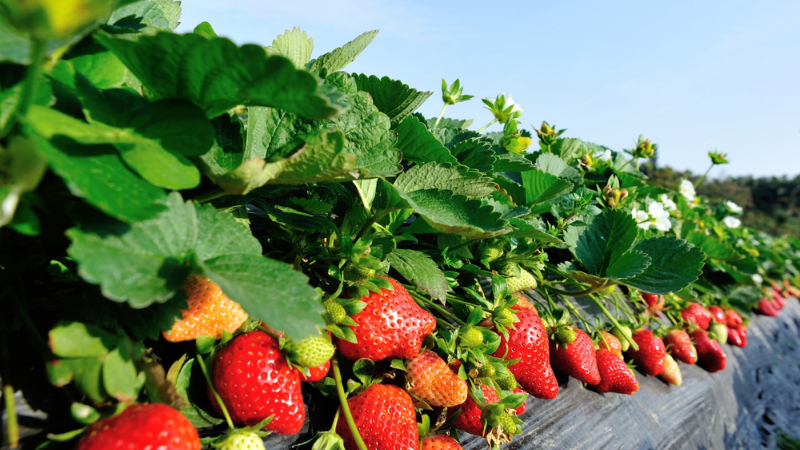Wide Adoption Of Sustainable Winegrowing Practices In California

Kiser Reservoir at Sangiacomo Family Vineyard.
Photo by Mike Pucci
Sangiacomo Family Vineyard has been sustainably farming for more than 75 years in Sonoma County . Now, the California Sustainable Winegrowing Alliance (CSWA) Sustainable Winegrowing Program (SWP), has helped the family business take its sustainability to new heights.
“All of our vineyards have been third-party certified through the California Certified Sustainable Winegrowing Program,” says Mike Sangiacomo, Managing General Partner.
The California Certified Sustainable Winegrowing Program, an offshoot of the SWP launched in 2010, provides verification of sustainability efforts through third-party audits.
“The program has helped us discover areas of sustainability that we hadn’t yet identified,” Sangiacomo adds.
For example, the vineyard has factored new criteria into its purchasing decisions. In addition to looking at safety, functionality, and efficiency, the business now takes energy type and recycling potential into consideration in everything from light fixtures to tractors.
“This is only one of the many areas that we have increased our sustainability,” Sangiacomo says.
They vineyard has also refined its viticulture techniques, which continue to evolve. “This is the core of what we do on a day-to-day basis.”
This was exactly the goal of the program, according to Allison Jordan, Vice President, Environmental Affairs, Wine Institute, and Executive Director, California Sustainable Winegrowing Alliance.
In addition to helping family-owned businesses make smart business decisions that keep the land healthy for future generations, there are other benefits to participation in the programs. “Business value can come from adoption of sustainable practices, such as improved quality, cost savings, efficiency, risk reduction, and helping to address the stringent regulatory environment in which California vineyards and wineries operate,” Jordan says.
She adds that other benefits in terms of public relations and marketplace interest came out of the SWP program, too. “The California wine community is well-positioned to take advantage of them,” she notes.
What The Program Entails
The SWP encourages practices that conserve water and energy, maintain healthy soil, protect air and water quality, enhance relations with employees and communities, preserve local ecosystems and wildlife habitat, and improve the economic vitality for vineyards.
Since CSWA was founded in 2002, 2,091 California vineyards and wineries have participated in the SWP, representing some 421,000 acres or 69% of California’s winegrape acreage and 212 million cases or 79% of California wine case production. CSWA has held more than 500 workshops to help growers implement sustainable practices.
Some of the vineyard practices widely adopted as part of the program include micro-irrigation to optimize water use, using cultural practices to naturally manage pests, reducing energy use through water pump improvements, and using resident vegetation, cover crops, or compost.
Winery operations have also adopted more sustainable practices, including conducting energy audits, monitoring water use, and designating recycling bins at their facilities to minimize waste.
Getting Certified
As an offshoot of the SWP, in 2010, CSWSA launched the California Certified Sustainable Winegrowing Program that Sangiacomo participates in. This program allows growers to take their sustainability efforts even further through third-party verification.
“Certification can serve as a tool to speed adoption of sustainable practices, communicate with stakeholders that are increasingly interested in sustainable business practices, and increase transparency and ensure confidence of progress on these activities,” Jordan says.
Through the program, the auditor verifies that a vineyard or winery adopts code best practices, meets prerequisite criteria, develops action plans, and demonstrates continued improvement.
“The benefits of certification to winegrowers include lending credibility to claims and providing insurance against ‘greenwashing’ accusation,” Jordan says, adding that certification also helps growers and vintners decrease inputs, risks, and costs.
The cost for certification is a $250 enrollment fee the first year, plus a $150 administration fee for the following years, and auditor fees.
“The SWP and CCSW-Certified [program] will provide meaningful tools to ensure that California growers and vintners continue to produce high-quality grapes and wines for generations to come,” Jordan says.
Sangiacomo agrees.
“This program helps with the preservation of the land that we farm and the ability to pass it along to the next generation,” he says. “Additionally, there are the savings of resources and a healthy, prosperous community.”









